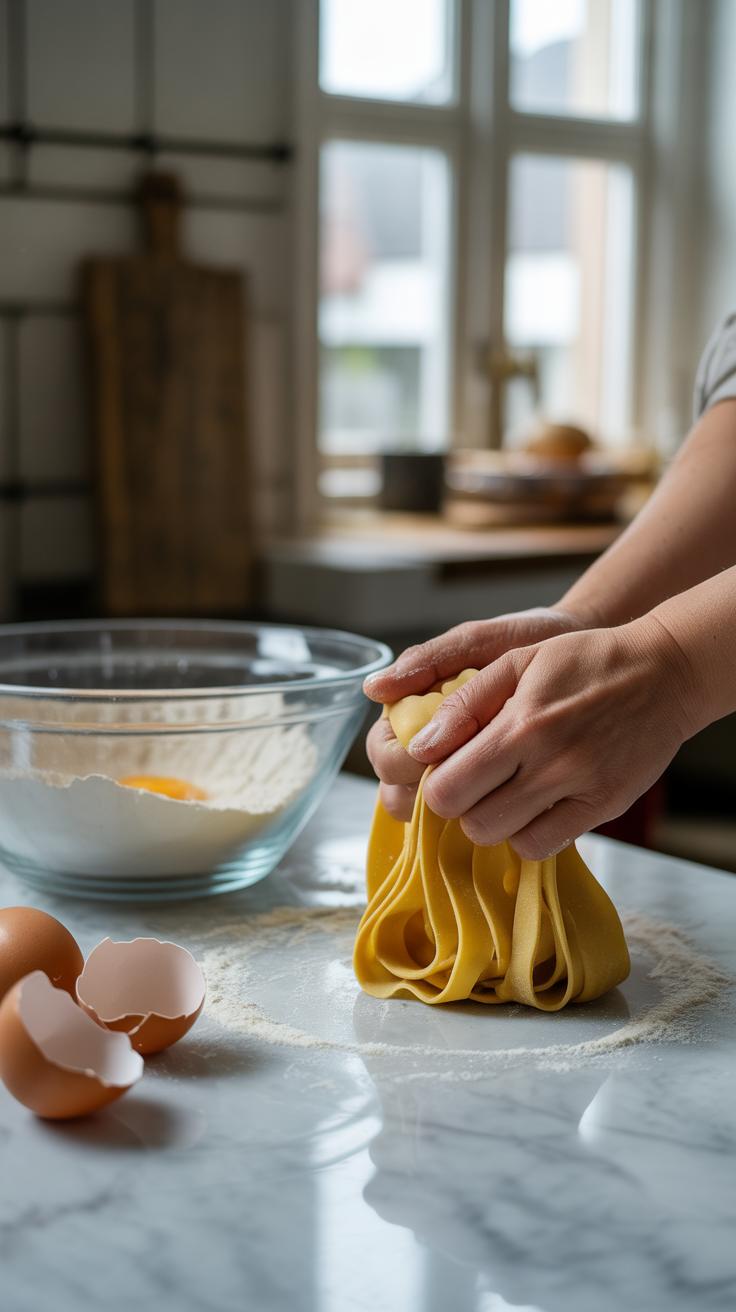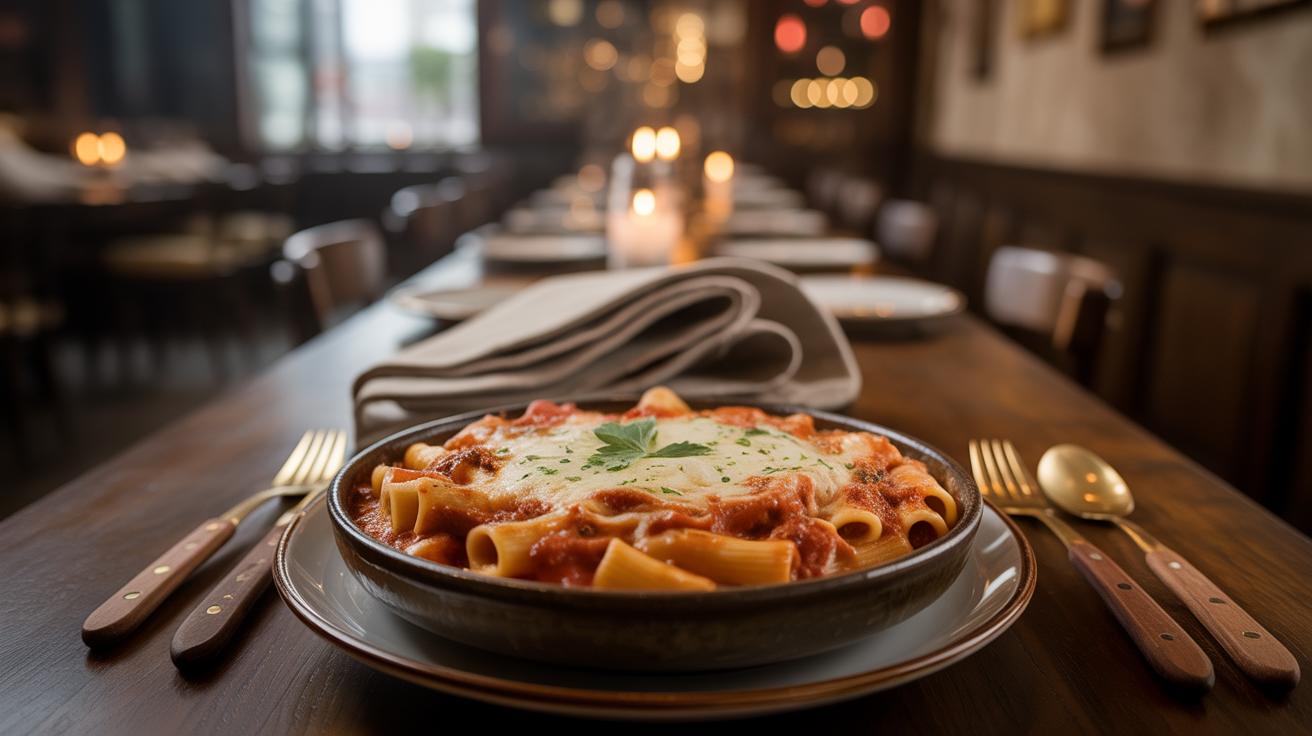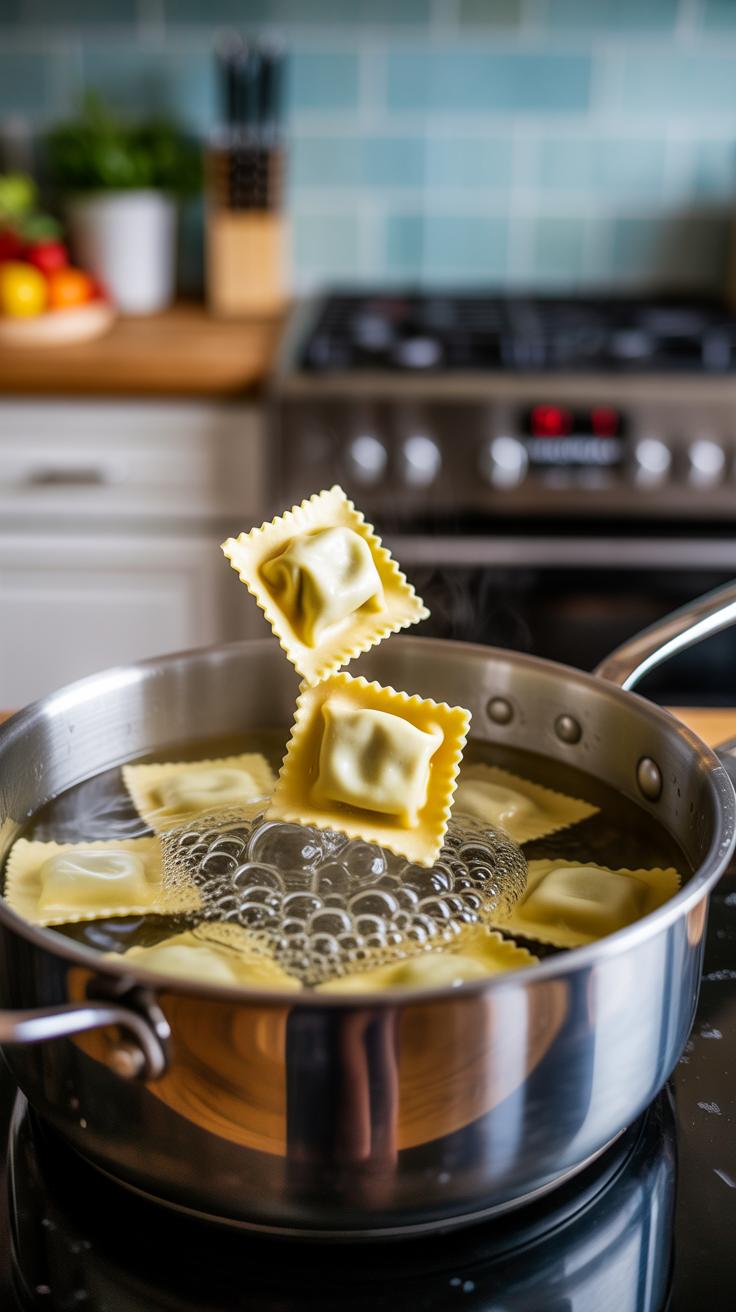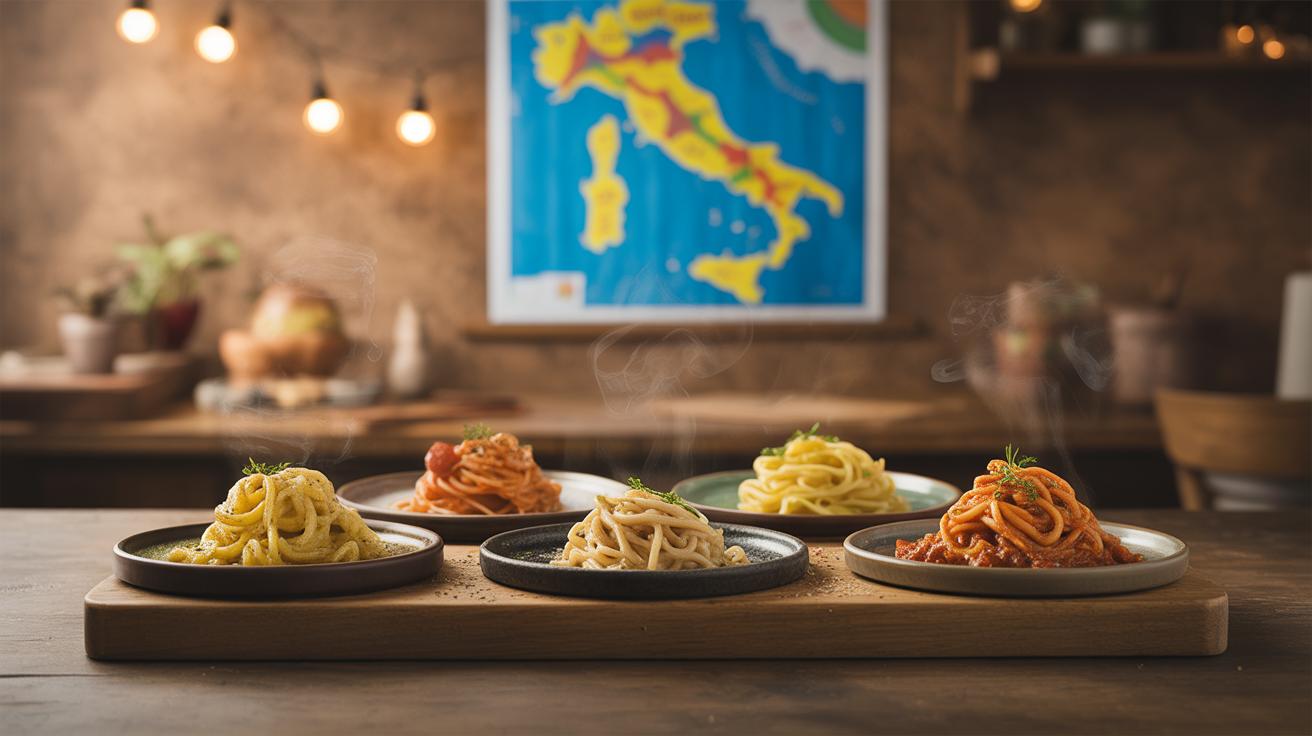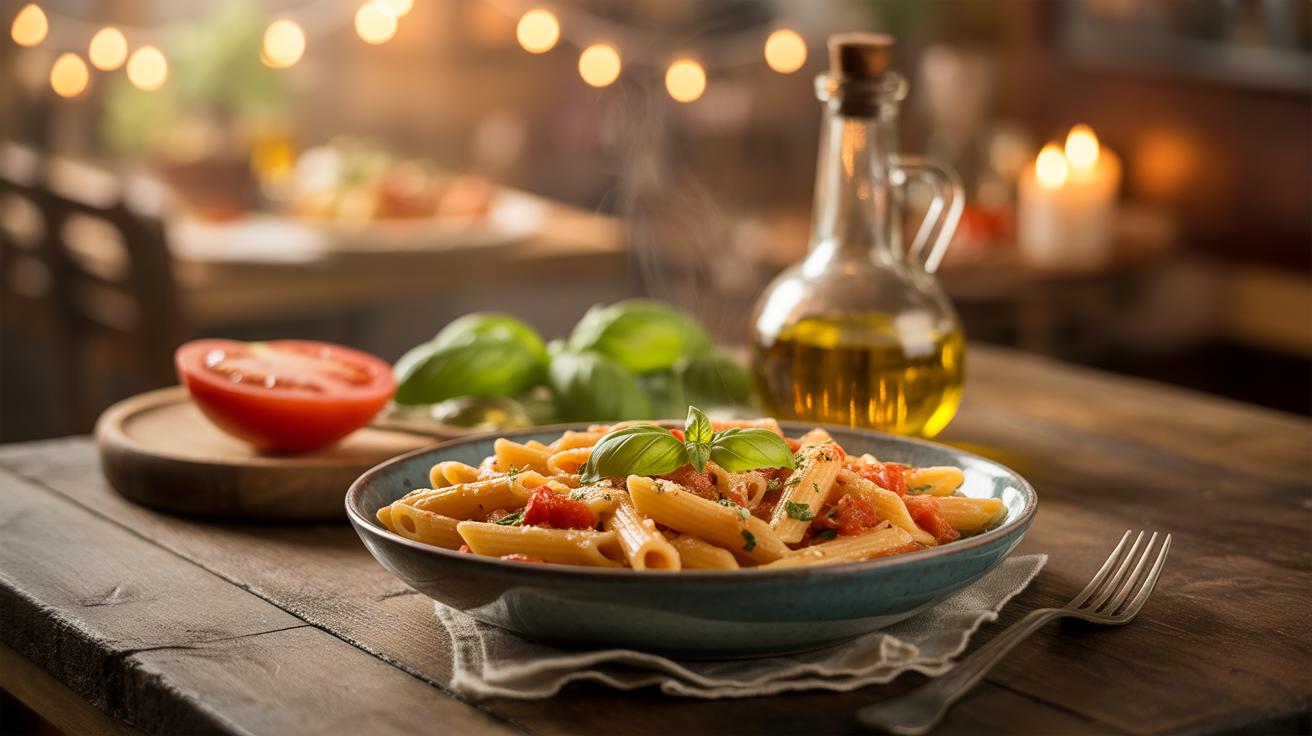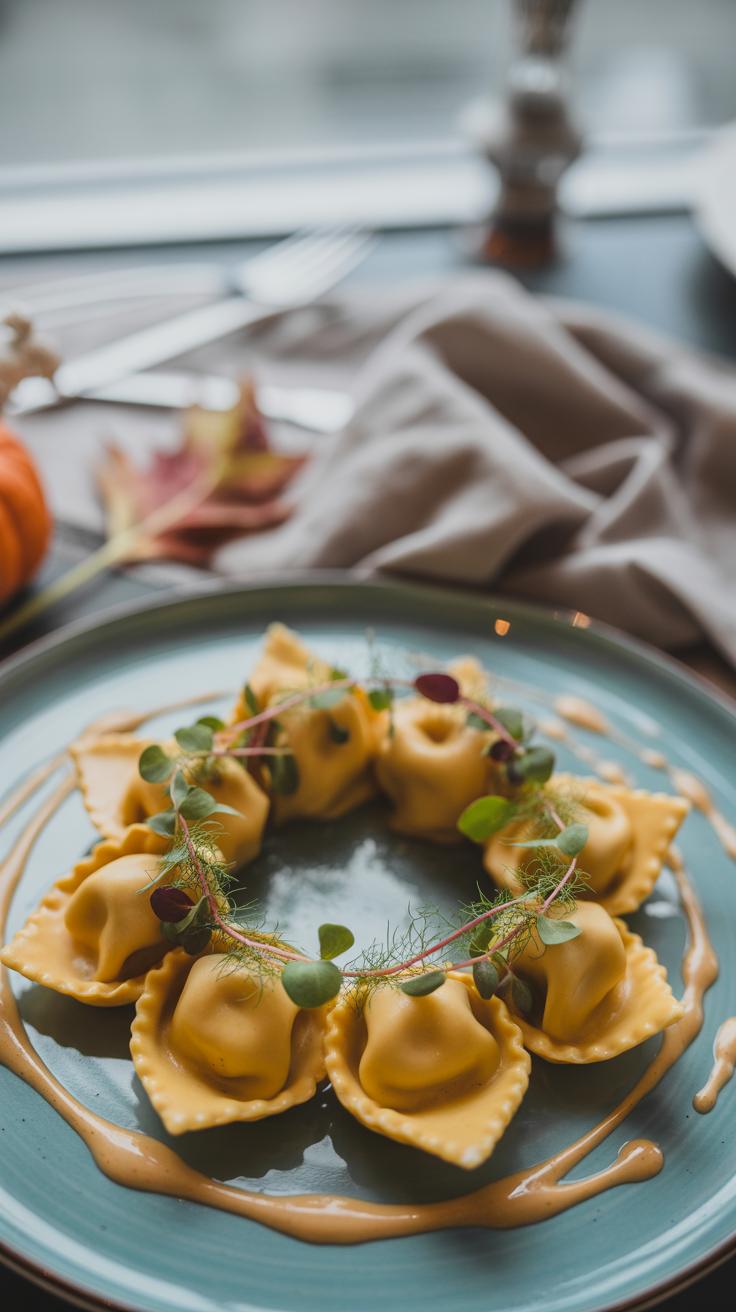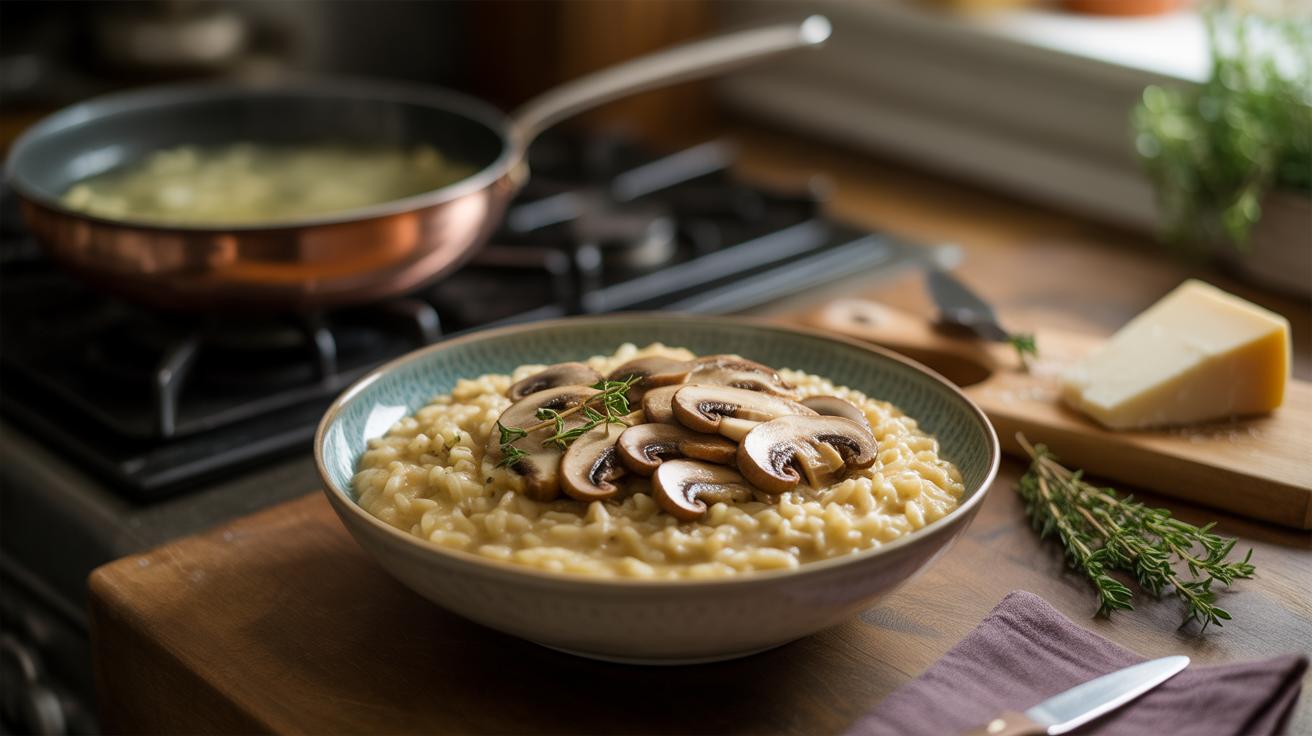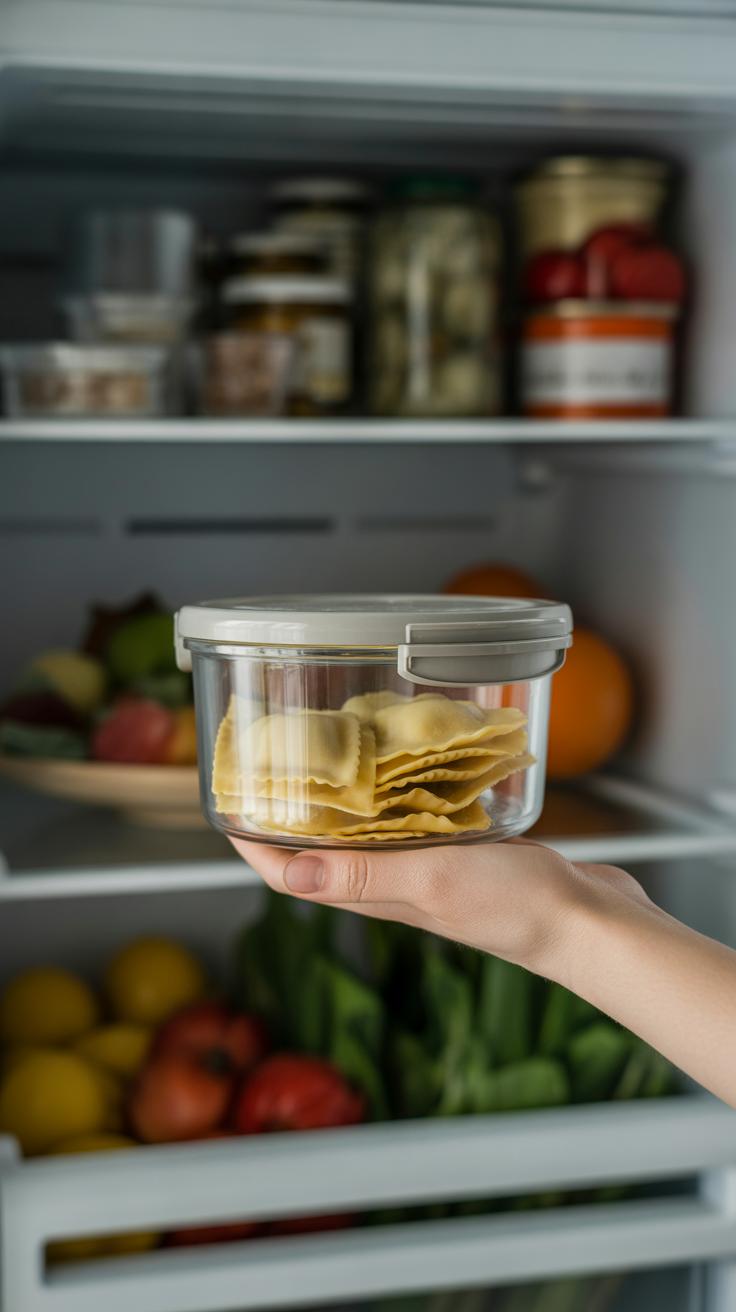Introduction
Homemade pumpkin ravioli recipes are perfect for fall feasts. Pumpkin adds a sweet, mild flavor that goes well with pasta. Making ravioli from scratch can seem hard, but it is easier than you think. You can impress your family and guests with a fresh, tasty dish this season.
This article will explore how to prepare the dough, create the pumpkin filling, and cook the ravioli. You will learn tips to make your ravioli look and taste great. Let’s start making your own pumpkin ravioli for cozy fall dinners.
Preparing Homemade Pasta Dough
Making fresh pasta dough for your pumpkin ravioli is simpler than you might think, and it really changes the whole dish. You only need a handful of ingredients, nothing fancy. Typically, flour and eggs form the base, but let’s break down why each matters.
Ingredients for Fresh Pasta Dough
– Flour: Usually all-purpose or “00” flour. It gives structure and texture, a bit like the skeleton of your pasta. Without enough gluten from the flour, the dough won’t hold shape well.
– Eggs: Eggs bind everything together and add richness and color. The yolk especially helps the pasta stay firm and flexible during cooking.
– Salt: Just a pinch, to enhance flavor subtly.
Some folks add a drizzle of olive oil, but it’s optional. I sometimes skip it, depending on how I want the dough to feel.
Step by Step Pasta Dough Making
Start by placing your flour on a clean surface or in a large bowl. Make a well in the center—like a little crater—and crack your eggs into it. Then sprinkle the salt around.
Using a fork or your fingers, slowly bring the flour into the eggs from the edges. This part takes a bit of patience. At first, it looks crumbly, but it gradually pulls together into a shaggy mass.
Once mixed enough to form a ball, start kneading. Use the heels of your hands, push down and away, then fold it back. Keep going—about 8 to 10 minutes. The dough will shift from sticky to smooth and elastic. If it stays tacky for too long, sprinkle a little flour, but don’t overdo it.
When it feels just right—soft but not sticky—wrap it tightly in plastic wrap. Then let it rest at room temperature. This resting period is key; it relaxes the gluten and makes rolling the dough much easier.
Rest for at least 30 minutes, though an hour wouldn’t hurt, if you have the time. Sometimes I pop mine in the fridge overnight. It firms up but just needs a bit of warming before rolling out.
With dough ready, you’re all set to roll it thin and start shaping those ravioli pockets that will cradle your pumpkin filling perfectly.
Creating the Perfect Pumpkin Filling
Choosing the Right Pumpkin
When making pumpkin ravioli, not every pumpkin fits the bill. You want something dense and flavorful, not watery or bland. Sugar pumpkins, sometimes called pie pumpkins, are your best option. Their flesh is naturally sweeter and has less moisture than the large carving pumpkins, which tend to be watery and tough.
Other winter squash varieties, like kabocha or butternut squash, also work well if you want a slightly different taste or texture. Kabocha, for example, has a nutty, rich flavor that can make your filling stand out. Butternut is smooth and subtly sweet, which blends nicely with cheese and herbs. In my experience, trying a few types can surprise you—sometimes the unexpected squash beats the pumpkin outright.
Seasoning and Mixing the Pumpkin Filling
Once you’ve cooked your pumpkin—roasting usually brings out the best flavor and keeps things drier—you can start layering in other ingredients. I like to combine the pumpkin with a mix of salty and aromatic elements to give the filling depth.
Here’s how I usually go about it:
- After roasting and scooping the pumpkin, mash it until smooth but not watery.
- Add grated Parmesan or pecorino cheese for a sharp, savory touch. Ricotta works too if you prefer creamier.
- Season with a pinch of nutmeg—it’s subtle but classic with pumpkin.
- Sprinkle in some freshly cracked black pepper and a little ground sage or thyme to bring a herbaceous note.
- If the mixture feels too dry, a splash of cream or beaten egg yolk helps bind it without watering down the flavor.
The balance is tricky—too much cheese or spice can overpower the pumpkin, but too little makes the filling dull. I’d urge you to taste as you go. Sometimes I overthink it, but most often, less really is more with pumpkin. Don’t be shy about experimenting. Maybe toss in a bit of browned butter or a tiny pinch of cinnamon. It might not suit everyone, but that’s half the fun, right?
Rolling and Shaping Your Pumpkin Ravioli
Rolling pasta dough can feel tricky at first, especially when you want it thin enough to cook evenly but still strong enough to hold the pumpkin filling without tearing. The goal is a delicate balance—too thick, and the ravioli turn doughy; too thin, and they break. I find that working slowly, turning and flipping the dough as you roll, helps keep the thickness even. Watching your pressure closely matters. Using a rolling pin, start from the center, pushing outward, then rotate the dough a quarter turn often. Don’t rush it—you can always thin it more, but repairing tears is messier.
Sometimes I wonder if it’s better to use a pasta machine here—there’s definitely a smoother consistency. Still, hand rolling keeps you connected to the process. Aim for sheets about 1 to 2 millimeters thick. If the dough feels sticky, a light dusting of flour helps, but too much flour can make the ravioli dry. Finding that sweet spot takes practice, but hey, guess what? Even imperfect shapes taste great.
When you’re ready to shape the ravioli, place small spoonfuls of your pumpkin filling evenly spaced on one sheet. Not too close, or the filling might ooze out when cooking, and not too far, or you waste dough. Cover gently with another sheet of dough. Press around each filling mound firmly but carefully, pushing out any air pockets—air can cause bursting later.
Sealing the edges well makes a difference. Press the edges together with your fingers or a fork, crimping to lock in the filling. Be mindful not to stretch the dough during sealing; it weakens there. I tend to dip my fingers in water and lightly moisten the dough edges before pressing—they stick better without cracking. Should you find a small tear, patch it using a bit of dough or extra water as glue. Pressing down firmly ensures your pumpkin stays put as you boil.
Cooking Techniques for Perfect Pumpkin Ravioli
Boiling Tips for Fresh Ravioli
Boiling pumpkin ravioli might seem straightforward, but there’s a subtle art to it. Fresh ravioli needs just a brief dip in boiling water—usually around two to three minutes. Watching them float to the surface is a good sign, though it’s not the only one. You want the pasta tender but still holding its shape. I’d say don’t rush to fish them out the moment they rise; give them a little time, but not too long. Overcooking turns them gummy and weak, which is disappointing after your careful work.
Using a large pot with plenty of salted water helps keep the ravioli from sticking together. Stir gently yet promptly after adding them. I remember once leaving ravioli too long without stirring and ended up with a clumpy mess. Also, don’t overcrowd the pot—less crowded water results in evenly cooked pieces.
Alternative Cooking Methods
Boiling isn’t the only way to prepare pumpkin ravioli. Pan-frying, for instance, can add a delightful crisp texture to the edges while keeping the filling warm and soft inside. After boiling briefly, you can toss them in a hot pan with butter or oil for a minute or two. It’s a nice contrast in textures, though it requires gentle handling to keep the ravioli intact.
Baking ravioli is less common but worth trying. Lay them on a buttered baking dish, drizzle lightly with oil or sauce, then bake at moderate heat. The pasta firms without falling apart, and you get a richer, caramelized flavor around the edges. It’s not quite traditional, and I’m still not sure I prefer it to boiling—still, it’s a useful option when you want hands-off cooking or a slightly different outcome.
Have you ever thought about trying ravioli in broth? It’s unconventional, but it infuses the pasta with extra flavor as it cooks. Just be extra careful when removing them so they don’t break.
Sauce Ideas to Complement Pumpkin Ravioli
Pairing the right sauce with pumpkin ravioli makes a big difference. You want something that doesn’t overpower the delicate pumpkin flavor but still adds character. Two classic options tend to work best: a simple butter and sage sauce, and creamy cheese sauces. Both bring out different qualities in the ravioli, so it depends on the mood you’re in or the occasion.
Butter and Sage Sauce
Butter and sage is a timeless match for pumpkin ravioli. It’s surprisingly easy to make but feels special. Start by gently melting butter over medium heat until foamy. Add fresh sage leaves and let them crisp up just a bit. The sage infuses the butter with an earthy aroma that complements the pumpkin’s natural sweetness.
When your ravioli are cooked, toss them right into this sauce. The butter clings lightly to the pasta, while the sage offers subtle herbal notes. I’ve found using browned butter here can add a slight nuttiness, which is quite nice. It’s simple — no heavy cream, no fuss — just pure flavor enhancement.
Creamy Cheese Sauces
On the other hand, creamy cheese sauces bring a lush richness. Parmesan and ricotta are favorites for this.
- For a parmesan sauce, melt butter and stir in plenty of grated parmesan and some cream or milk. Heat gently, so it doesn’t break, until smooth and velvety. The sharpness of parmesan cuts through the pumpkin’s mildness.
- Ricotta sauce is softer. Whisk ricotta with a touch of cream, lemon zest, and maybe a pinch of nutmeg. This creates a gentle creaminess that feels comforting without heaviness.
Both sauces coat pumpkin ravioli beautifully and add richness without stealing the spotlight. It’s a balance — too much cheese, and you risk drowning the pumpkin’s character. But done right, it can turn a simple fall dish into something really cozy and memorable.
Presentation Tips for Your Fall Dish
Plating pumpkin ravioli can be surprisingly simple but still impressive. Think about the shape and color—those golden pockets deserve to stand out on the plate without getting lost in a sea of sauce. Sometimes, just a light drizzle of browned butter or a few scattered herbs is enough. You don’t need to pile on a ton of extras. I often find that less clutter on the plate makes each ravioli more tempting and allows the pumpkin filling to shine.
When arranging, try spacing the ravioli evenly or in a gentle curve rather than a straight line. It makes the presentation feel a bit more natural and inviting, like the dish is ready to be enjoyed without fuss.
Garnishes That Add Flavor and Color
For garnishing, a sprinkle of fresh herbs like sage or thyme can bring an earthy contrast to the sweet pumpkin. Chopped toasted nuts—walnuts or pecans—add a pleasant crunch and a warm aroma. A pinch of freshly cracked black pepper or a dash of nutmeg on top can elevate the flavors subtly without overwhelming the dish.
I sometimes toss on a few pomegranate seeds to introduce a pop of color and a hint of tartness. It’s unexpected but works beautifully with pumpkin. And yes, grated parmesan or pecorino is classic and those salty notes balance the sweetness well. For a bit of texture and aroma, a light scattering of fried sage leaves might be just the finishing touch you didn’t think you needed.
Serving Suggestions
As for serving, pumpkin ravioli pairs well with simple sides that keep the focus on the pasta. A crisp green salad with a tangy vinaigrette refreshes the palate. Roasted Brussels sprouts or sautéed mushrooms also work, adding earthiness and depth.
Sometimes, I like to serve the ravioli with a small bowl of warm broth or consommé on the side, letting each person dip or pour as they prefer. It’s cozy and adds an interactive element to the meal.
What about bread? A rustic loaf or a soft dinner roll can be handy for sopping up extra sauce. But, honestly, the ravioli alone can feel like the whole feast if you dress it right.
Storing and Reheating Pumpkin Ravioli
Refrigeration and Freezing Tips
If you find yourself with leftover pumpkin ravioli, storing them properly is key to keeping their flavor and texture intact. For cooked ravioli, place them in a shallow airtight container and separate layers with parchment paper to avoid sticking. They’ll last in the fridge for up to three days, but I wouldn’t push it longer because the delicate pasta can start to get soggy.
Uncooked ravioli can also be frozen, which is great if you’ve made a big batch. Lay them in a single layer on a baking sheet until frozen solid—usually a few hours—then transfer to a freezer bag. This way, they won’t clump together. Frozen, they can last for about 2-3 months, but I’ve noticed the texture might shift slightly after a while, maybe a bit less tender when cooked.
Reheating Techniques
Reheating pumpkin ravioli gently makes all the difference. Microwaving often dries them out or makes the pasta rubbery, so I tend to avoid it unless I’m in a real hurry. A better way? Briefly heat them in simmering water for about a minute, just enough to warm without overcooking. They soften back up nicely and don’t fall apart.
If you have leftover ravioli with sauce, warming them slowly in a skillet on low heat works well. Add a splash of water or broth to keep things moist and cover the pan, so the ravioli steam a bit. This technique keeps the filling creamy and the pasta tender, although, I admit, it takes some patience.
Do you ever wonder if sealing ravioli tightly before freezing traps steam and makes reheating tricky? It’s an ongoing debate in my kitchen. But ensuring a careful thaw and gentle reheating definitely helps keep your pumpkin ravioli tasting just right for your autumn table.
Variations and Flavor Twists on Pumpkin Ravioli
When it comes to pumpkin ravioli, sticking to the classic filling is comforting—but don’t hesitate to experiment a little. Small tweaks can shift the flavor or texture in surprising ways. You might try roasting the pumpkin first to deepen its sweetness, or even swapping boiling for pan-frying the ravioli for a crispy edge that contrasts with the tender dough.
Adding herbs and spices to the pumpkin filling can change the whole vibe of your dish. Sage is a popular choice, though I find thyme offers a slightly earthier note. Nutmeg and cinnamon bring warmth, but be careful not to overpower the pumpkin’s subtle taste. Sometimes, a sprinkle of chili flakes or a pinch of cumin can raise an unexpected but pleasant hint of heat or smokiness—you might like it, or not.
Exploring alternative fillings is where this dish gets playful. Mixing ricotta or mascarpone into the pumpkin creates a creamier, richer texture. Toasted nuts—walnuts, pecans, or pine nuts—add crunch and a toasty flavor. Some people add sautéed mushrooms or caramelized onions for earthiness and depth. There’s no one right way, just what feels right for your taste buds or the mood of your meal. Have you tried combining a bit of goat cheese with pumpkin? The tang cuts through the sweetness in a way that’s worth testing out.
Conclusions
Making pumpkin ravioli at home is a great way to enjoy fall flavors. The process is fun and simple when you follow clear steps. From mixing the dough to preparing the filling, each part adds to the delicious result.
Try using different pumpkin filling recipes and sauce ideas to find your favorite. Homemade pumpkin ravioli makes any fall meal special. You can share this comforting dish with family and friends and enjoy the season’s best flavors.


